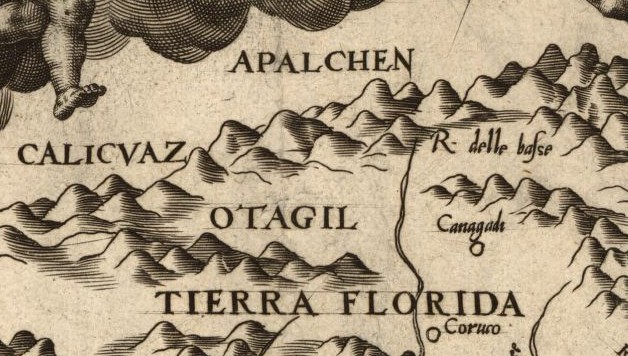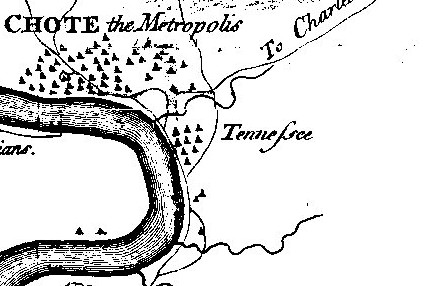|
Vaccinium Hirsutum
''Vaccinium hirsutum'' is a species of flowering plant in the heath family known by the common name hairy blueberry. This species is endemic to a small area in the southern Appalachian Mountains, where it is only known from a few counties in eastern Tennessee, northern Georgia, and the Carolinas The Carolinas, also known simply as Carolina, are the U.S. states of North Carolina and South Carolina considered collectively. They are bordered by Virginia to the north, Tennessee to the west, and Georgia (U.S. state), Georgia to the southwes .... ''Vaccinium hirsutum'' is native to dry oak-pine ridges, where it can be locally abundant. It is a shrub up to 75 cm (28 inches) tall, forming large colonies. Leaves are rather thick, elliptical, densely hairy, up to 62 mm (2 1/2 inches) long. ''Vaccinium hirsutum'' produces white, cylindrical flowers in late spring, followed by hairy, black berries in the summer. References External links * * hirsutum Flora of the South ... [...More Info...] [...Related Items...] OR: [Wikipedia] [Google] [Baidu] |
Samuel Botsford Buckley
Samuel Botsford Buckley (May 9, 1809 – February 18, 1884) was an American botanist, geologist, and naturalist. Buckley was born in Torrey, New York, on May 9, 1809. He graduated from Wesleyan University in 1836. He received a Ph.D. from Waco University in 1872. Buckley investigated the botany of the southern United States and discovered many new species of plants and mollusks. The plant genus '' Buckleya'' was named in his honor. Buckley determined the height of several summits in the Great Smoky Mountains, including Mount Buckley which was named in his honor. Buckley served as an assistant to Texas chief geologist Benjamin Franklin Shumard. He named an oak species after Shumard in 1860, but then stymied Shumard's reappointment under newly-elected Governor Sam Houston. Buckley was the Texas state geologist from 1860 to 1861 and 1874 to 1877. He was the scientific editor of the ''State Gazette'' in Austin, Texas Austin ( ) is the List of capitals in the United S ... [...More Info...] [...Related Items...] OR: [Wikipedia] [Google] [Baidu] |
Ericaceae
The Ericaceae () are a Family (biology), family of flowering plants, commonly known as the heath or heather family, found most commonly in acidic and infertile growing conditions. The family is large, with about 4,250 known species spread across 124 genera, making it the 14th most species-rich family of flowering plants. The many well known and economically important members of the Ericaceae include the cranberry, blueberry, huckleberry, rhododendron (including azaleas), and various common heaths and heathers (''Erica (plant), Erica'', ''Cassiope'', ''Daboecia'', and ''Calluna'' for example). Description The Ericaceae contain a morphologically diverse range of taxa, including Herbaceous plant, herbs, chamaephyte, dwarf shrubs, shrubs, and trees. Their leaves are usually evergreen, alternate or whorled, simple and without stipules. Their flowers are Plant sexuality#Individual plant sexuality, hermaphrodite and show considerable variability. The petals are often fused (sympetalous ... [...More Info...] [...Related Items...] OR: [Wikipedia] [Google] [Baidu] |
Appalachian Mountains
The Appalachian Mountains, often called the Appalachians, are a mountain range in eastern to northeastern North America. The term "Appalachian" refers to several different regions associated with the mountain range, and its surrounding terrain. The general definition used is one followed by the United States Geological Survey and the Geological Survey of Canada to describe the respective countries' Physiographic region, physiographic regions. The U.S. uses the term Appalachian Highlands and Canada uses the term Appalachian Uplands; the Appalachian Mountains are not synonymous with the Appalachian Plateau, which is one of the provinces of the Appalachian Highlands. The Appalachian range runs from the Newfoundland (island), Island of Newfoundland in Canada, southwestward to Central Alabama in the United States; south of Newfoundland, it crosses the 96-square-mile (248.6 km2) archipelago of Saint Pierre and Miquelon, an overseas collectivity of France, meaning it is technica ... [...More Info...] [...Related Items...] OR: [Wikipedia] [Google] [Baidu] |
Tennessee
Tennessee (, ), officially the State of Tennessee, is a landlocked U.S. state, state in the Southeastern United States, Southeastern region of the United States. It borders Kentucky to the north, Virginia to the northeast, North Carolina to the east, Georgia (U.S. state), Georgia, Alabama, and Mississippi to the south, Arkansas to the southwest, and Missouri to the northwest. Tennessee is the List of U.S. states and territories by area, 36th-largest by area and the List of U.S. states and territories by population, 15th-most populous of the 50 states. According to the United States Census Bureau, the state's estimated population as of 2024 is 7.22 million. Tennessee is geographically, culturally, and legally divided into three Grand Divisions of Tennessee, Grand Divisions of East Tennessee, East, Middle Tennessee, Middle, and West Tennessee. Nashville, Tennessee, Nashville is the state's capital and largest city, and anchors its largest metropolitan area. Tennessee has dive ... [...More Info...] [...Related Items...] OR: [Wikipedia] [Google] [Baidu] |
Georgia (U
Georgia most commonly refers to: * Georgia (country), a country in the South Caucasus * Georgia (U.S. state), a state in the southeastern United States Georgia may also refer to: People and fictional characters * Georgia (name), a list of people and fictional characters with the female given name * Georgia (musician) (born 1990), English singer, songwriter, and drummer Georgia Barnes Places Historical polities * Kingdom of Georgia, a medieval kingdom * Kingdom of Eastern Georgia, a late medieval kingdom * Kingdom of Western Georgia, a late medieval kingdom * Georgia Governorate, a subdivision of the Russian Empire * Georgia within the Russian Empire * Democratic Republic of Georgia, a country established after the collapse of the Russian Empire and later conquered by Soviet Russia. * Georgian Soviet Socialist Republic, a republic within the Soviet Union * Republic of Georgia (1990–1992), Republic of Georgia, a republic in the Soviet Union which, after the collapse of the U ... [...More Info...] [...Related Items...] OR: [Wikipedia] [Google] [Baidu] |
Carolinas
The Carolinas, also known simply as Carolina, are the U.S. states of North Carolina and South Carolina considered collectively. They are bordered by Virginia to the north, Tennessee to the west, and Georgia (U.S. state), Georgia to the southwest. The Atlantic Ocean is to the east. Combining North Carolina's population of 10,439,388 and South Carolina's of 5,118,425, the Carolinas have a collective population of 15,557,813 as of 2020. If the Carolinas were a single state of the United States, it would be the List of U.S. states and territories by population, fifth-most populous state, behind California, Texas, Florida, and New York. The Carolinas were known as the Province of Carolina during America's early Colonial America, colonial period, from 1663 to 1712. Prior to that, the land was considered part of the Colony and Dominion of Virginia, from 1609 to 1663. The province was named ''Carolina'' to honor King Charles I of England. Carolina is taken from the Latin word for "Char ... [...More Info...] [...Related Items...] OR: [Wikipedia] [Google] [Baidu] |
Vaccinium
''Vaccinium'' is a common and widespread genus of shrubs or dwarf shrubs in the heath family (Ericaceae). The fruits of many species are eaten by humans and some are of commercial importance, including the cranberry, blueberry, bilberry (whortleberry), lingonberry (cowberry), and huckleberry. Like many other heath plants, they are restricted to acidic soils. Description The plant structure varies between species: some trail along the ground, some are dwarf shrubs, and some are larger shrubs perhaps tall. Some tropical species are epiphytic. Stems are usually woody. Flowers are epigynous with fused petals and have long styles that protrude from their bell-shaped corollas. Stamens have anthers with extended tube-like structures called "awns" through which pollen falls when mature. Inflorescences can be axillary or terminal. The fruit develops from an inferior ovary and is a four- or five-parted berry; it is usually brightly coloured, often red or bluish with purple juice. ... [...More Info...] [...Related Items...] OR: [Wikipedia] [Google] [Baidu] |
Flora Of The Southeastern United States
Flora (: floras or florae) is all the plant life present in a particular region or time, generally the naturally occurring ( indigenous) native plants. The corresponding term for animals is ''fauna'', and for fungi, it is '' funga''. Sometimes bacteria and fungi are also referred to as flora as in the terms '' gut flora'' or '' skin flora'' for purposes of specificity. Etymology The word "flora" comes from the Latin name of Flora, the goddess of plants, flowers, and fertility in Roman mythology. The technical term "flora" is then derived from a metonymy of this goddess at the end of the sixteenth century. It was first used in poetry to denote the natural vegetation of an area, but soon also assumed the meaning of a work cataloguing such vegetation. Moreover, "Flora" was used to refer to the flowers of an artificial garden in the seventeenth century. The distinction between vegetation (the general appearance of a community) and flora (the taxonomic composition of a community) ... [...More Info...] [...Related Items...] OR: [Wikipedia] [Google] [Baidu] |
Plants Described In 1843
Plants are the eukaryotes that form the kingdom Plantae; they are predominantly photosynthetic. This means that they obtain their energy from sunlight, using chloroplasts derived from endosymbiosis with cyanobacteria to produce sugars from carbon dioxide and water, using the green pigment chlorophyll. Exceptions are parasitic plants that have lost the genes for chlorophyll and photosynthesis, and obtain their energy from other plants or fungi. Most plants are multicellular, except for some green algae. Historically, as in Aristotle's biology, the plant kingdom encompassed all living things that were not animals, and included algae and fungi. Definitions have narrowed since then; current definitions exclude fungi and some of the algae. By the definition used in this article, plants form the clade Viridiplantae (green plants), which consists of the green algae and the embryophytes or land plants (hornworts, liverworts, mosses, lycophytes, ferns, conifers and other gymnosperm ... [...More Info...] [...Related Items...] OR: [Wikipedia] [Google] [Baidu] |





